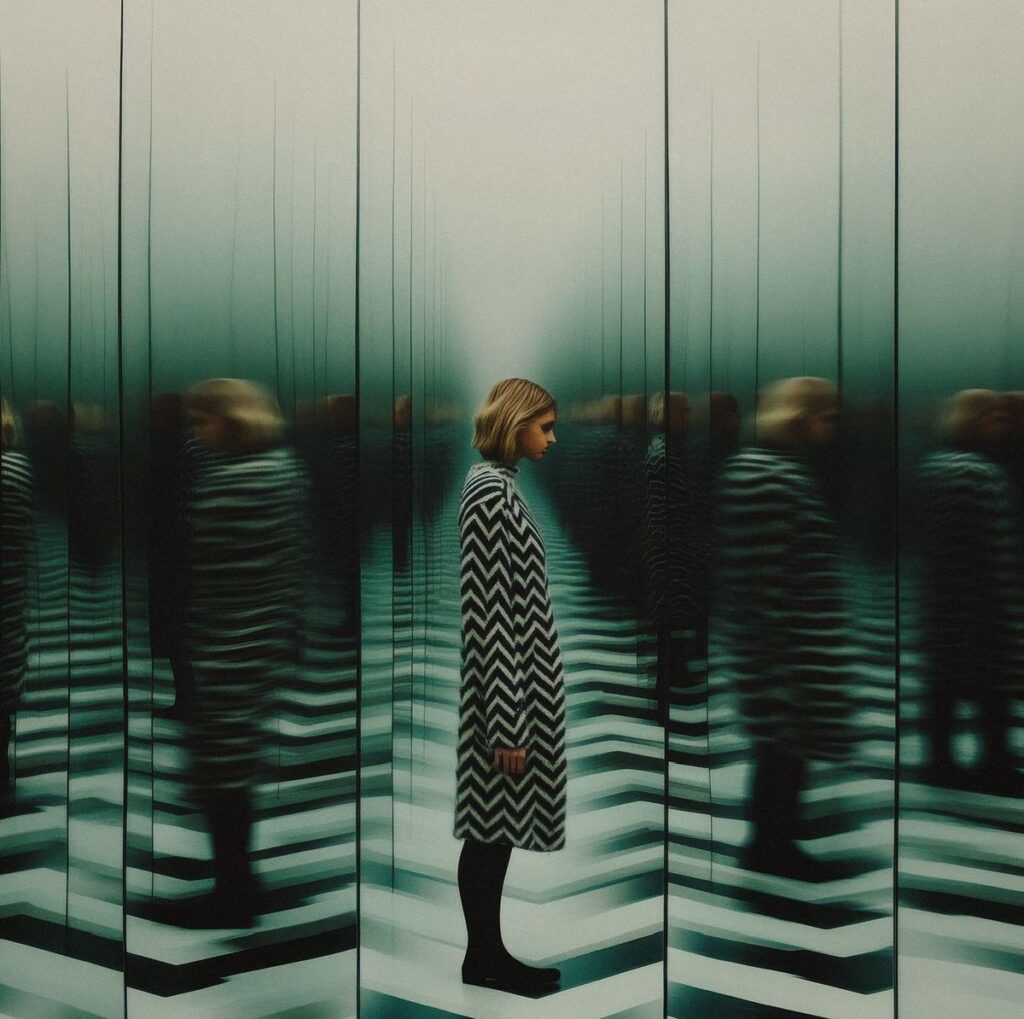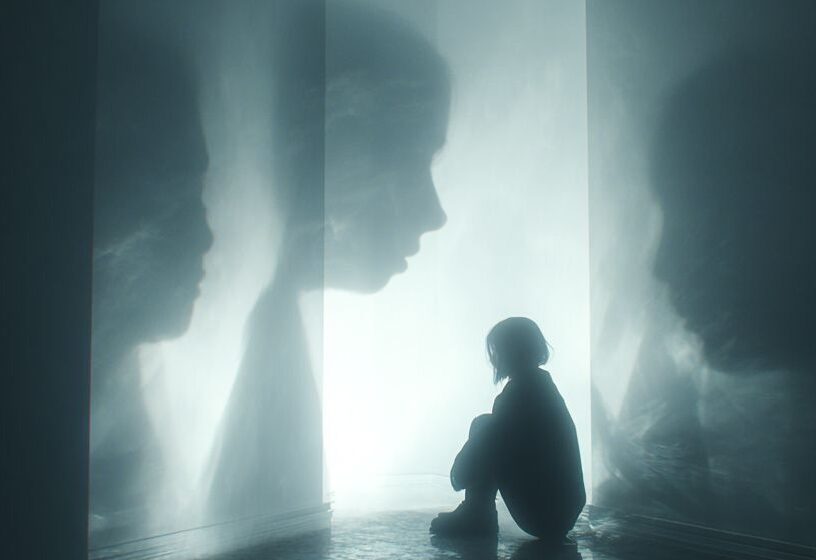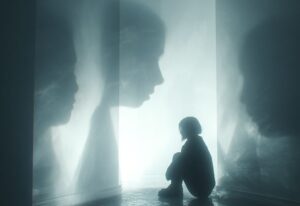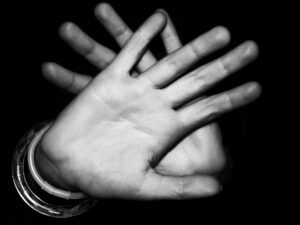Some days, the world feels unfamiliar, the air heavier, your reflection slightly offbeat. You stare into the mirror and see a face that looks like yours but doesn’t quite feel like it. The voice that slips from your lips sounds foreign, your handwriting bends in strange directions, and time itself becomes a blur.
Then come the voices, faint at first, then echoing, each one tugging at your mind, urging you to respond. To exist. To choose who you are in that moment. Fear coils quietly beneath your skin – the kind that doesn’t scream but suffocates. You watch yourself from somewhere distant. Thinking. Speaking. Moving, but it’s as though the body no longer belongs to you.
There’s a wildness to it; a quiet storm rising inside, where fragments of you collide and scatter. You are both the watcher and the watched, trapped between what is real and what once was. It’s like being a guest inside your own skin, living, breathing, yet slowly drifting from the freedom of being whole.
For many, this isn’t confusion or fantasy it’s the lived reality of Dissociative Identity Disorder (DID). Beneath the myths and movie scripts lies something achingly human: a mind that learned to survive by dividing itself. DID isn’t about being “many people”; it’s about one person who endured more than one heart could hold. Each identity is a story, a fragment of strength, grief, or protection that emerged when life became unbearable. Behind every shift in voice, every missing moment, is not madness but memory, the mind’s extraordinary way of saying, I survived.
And yet, much of what the world believes about DID is shaped by fiction, not by the quiet, complex truth of those who live with it every day.
Breaking the myth
Dissociative Identity Disorder isn’t about having an “evil twin” or acting out scenes from a movie. It’s not fiction, not attention-seeking, and not as rare as people think, it’s a real, complex response to deep trauma.

We’ve seen it dramatized in films, one body, many personalities, chaos and danger, but the truth is far quieter, and far more human. Dissociative Identity Disorder (DID) isn’t a plot twist; it’s a story of survival. Forget what Hollywood told you: DID isn’t about losing control, it’s about holding on, piece by piece, when the mind has endured more than it can bear.
Imagine living in fragments
Imagine waking up in a world that feels both yours and not yours, where hours slip away like sand through your fingers, and fragments of your life scatter like pieces of an unfinished puzzle. You find notes in your handwriting with words you don’t recall writing, clothes you don’t remember buying, and memories that feel like someone else’s story.
Faces look familiar yet distant, and sometimes even your reflection feels different, a new posture, a new voice, a new way of being. It’s not madness; it’s survival. Every part of you once emerged to carry pain too heavy for one heart to hold. Living with DID is learning to meet each voice not with fear, but with understanding, and in that, discovering that every fragment was always trying to keep you whole.
What exactly is Dissociative Identity Disorder?

Dissociative Identity Disorder is a complex mental health condition where one person experiences two or more distinct identity states, each with unique memories, emotions, and ways of seeing the world. These “parts” or “alters” may take turns being in control, often in response to stress or reminders of past trauma.
DID is not schizophrenia, and it’s not just mood swings or “split personalities.” Schizophrenia affects perception and reality, people may hear or see things that aren’t there. DID, however, is about fragmentation, not delusion. Each identity is part of the same mind, created to hold emotions too painful to face all at once.
So no, DID isn’t madness; it’s a coping mechanism. It’s the mind’s extraordinary way of saying, “I can’t bear this all at once, but maybe I can bear it in pieces.”
How Common Is It, Really?
Research suggests DID affects about 1.1% to 1.5% of the general population, roughly 1 in every 100 people. That makes it as common as, or even more common than, schizophrenia, which affects about 0.25%–0.64% of adults.
But here’s the surprising truth: most people with DID don’t “show” it outwardly. Only about 5–6% visibly display switching behavior, the other 94–95% live quietly, often without others ever noticing. It’s far more common than most assume, yet far more hidden than most imagine.
Where it begins (The roots beneath the surface).
For many with DID, the story begins in early childhood, long before they even understood what “trauma” meant. These are years marked by repeated pain, neglect, or abuse; the kind that doesn’t just hurt the body but fractures the sense of safety and identity.
When a child can’t escape or fight back, the mind finds another way: it hides. It divides. It creates safe inner worlds to hold unbearable memories. One child grows up with many inner selves, not by choice, but by necessity.
Each part plays a role: one holds fear, another carries anger, the other smiles to keep life moving. It’s not weakness, it’s the mind’s brilliance at survival. DID isn’t proof of being broken; it’s proof of a mind that refused to give up, even when it had to shatter to stay alive.
What it feels like inside.
Living with DID can feel like existing in fragments of time. You might wake up to find the day has already started without you, someone cleaned, worked, or cried, and it was you, but not “you.”
Memory gaps can feel like blackouts in your own life. There’s a sense of detachment, like watching yourself from across the room. The voices you hear aren’t hallucinations; they’re your own inner dialogues, different tones of the same story.
Switches between identities can be subtle or overwhelming. For some, even handwriting, posture, or speech can change. It’s confusing and exhausting, yet to the person living it, this is survival in motion.
Beyond the fragments: The human side of healing
Take “Charity,” for instance, not her real name. She describes her life as “a team effort.” There’s the part of her that handles work with calm confidence, another that avoids mirrors, one that still trembles like the child she once was.
For years, she thought she was broken, until therapy helped her see these parts were not enemies, but protectors. “They all had a job,” she says. “One carried the pain so another could smile. One took the anger so another could sleep. Together, they kept me alive.”
Recovery for those with DID isn’t about erasing identities, it’s about connection. With trauma-informed therapy, grounding, and supportive relationships, many learn to communicate internally. The inner noise quiets; the pieces begin to align. Healing doesn’t mean forgetting, it means remembering safely.
And here’s what many miss: DID doesn’t define intelligence, talent, or worth. Many living with it are teachers, parents, artists, and healers. Their minds once fractured under trauma, but within that fracture is remarkable strength and empathy.
The weight of misunderstanding
For many people with DID, the hardest part isn’t the memory gaps or voices, it’s how the world sees them. Too often, DID is met with disbelief, fear, or ridicule. Society calls them “crazy” or “possessed,” shaped by horror movies rather than truth.
Imagine living with something already hard to understand, and then being doubted for it. The loneliness can be crushing. Many hide their truth to avoid judgment. But behind every stereotype is a person who’s endured pain few can imagine. What they need isn’t skepticism, it’s compassion.
Holding space for healing
In a world quick to label and slow to listen, understanding Dissociative Identity Disorder begins with empathy. Behind every fragmented memory is a person doing their best to exist, to be seen, to be safe, to feel whole.
DID isn’t a tragedy; it’s a testament to resilience, proof of how powerfully the human mind protects itself when pain becomes too much to bear. Those living with it aren’t broken; they are survivors of what would have silenced many.
What they need most isn’t disbelief or distance, but patience, understanding, and space to heal in their own time.
So the next time you hear about Dissociative Identity Disorder, remember: it isn’t about “many people in one body,” but about one person with many stories, each one trying, in their own way, to find a way home.
Author: Walter Ngithi is a social worker and a community volunteer.







